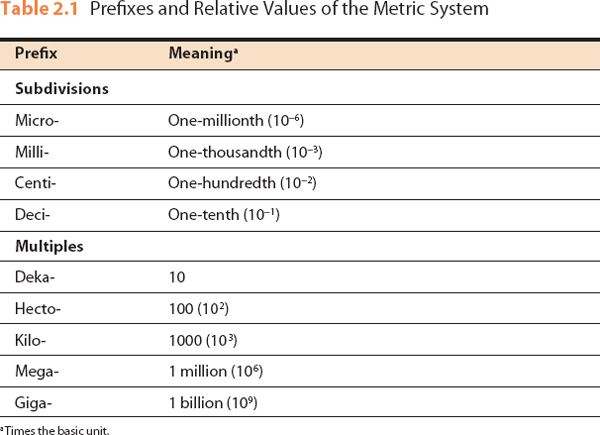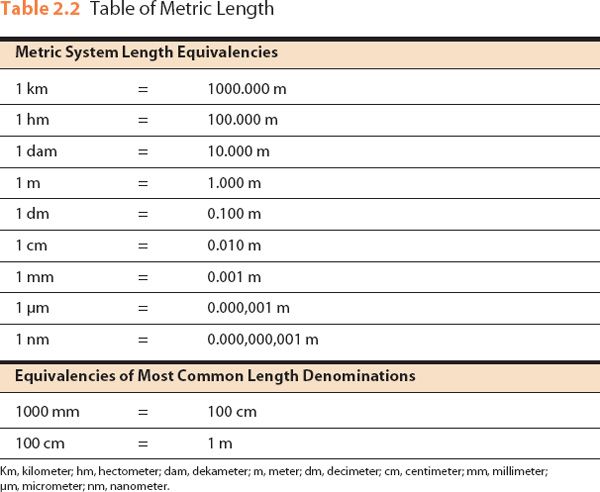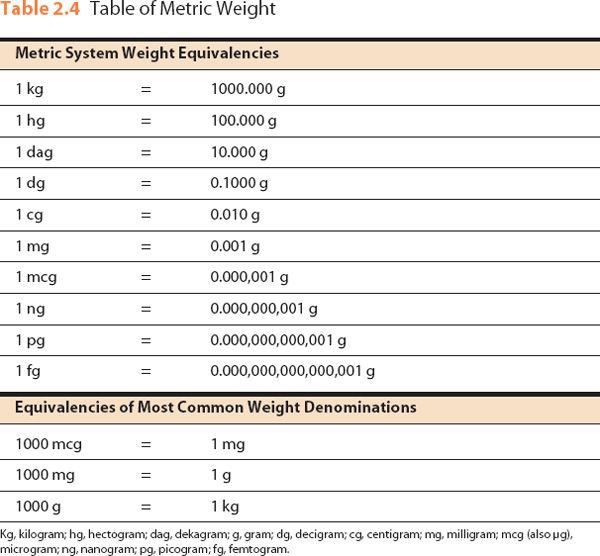TERMS
•24-hour time
•Apothecaries’ system
•Avoirdupois system
•Gram
•Household system
•Liter
•Meter
•Metric system
OBJECTIVES
Upon completion of this chapter, the technician student will be able to:
•Express metric measures correctly.
•Convert measures within the metric system accurately.
•Identify symbols within all systems and identify their equivalent.
•State the apothecaries’ measures commonly used in the practice of pharmacy.
•Identify measures in the household system used in the practice of pharmacy.
•State the common household equivalents in the metric system.
•Convert approximate equivalents between the metric, apothecaries’, and household systems.
•Become familiar with milliequivalents, units, and international units of measure.
•Convert traditional 12-hour time to 24-hour time (military or international time) and vice versa.
Medication is primarily manufactured, ordered, and prepared in the metric system. The major focus of this chapter is to make the metric system, particularly as it is used in the practice of pharmacy, and converting measures within this system, habit to the technician student. The second focus of this chapter is to familiarize the technician student with the household system of measure and conversions between it and the metric system. A brief review of the apothecaries’ system is included. The apothecaries’ system has been almost totally replaced by the metric system, but some medications are still being ordered in grains, and some manufacturers continue to label certain medications in grains. The avoirdupois system will also be mentioned in relation to bulk and stock powdered chemicals and drugs.
 Metric System
Metric System
The metric system of measure was formulated in France in the late 18th century. Its use in the United States was legalized (but not made mandatory) in 1866. By act of Congress in 1893, it became our legal standard of measure, and all other systems have been referred to it for official comparison (including the United States’ customary system of measurement—pounds, yards, and so on) ever since. It is accepted by scientists the world over because its tables are simple, because they are based on the decimal system of notation, and because the greater of two consecutive denominations of the same kind is always 10 times the lesser.
metric system The decimal system of measure widely used for prescribing and administering medication.
Each table of the metric system contains a definitive unit. The meter is the unit of length; the liter, of volume; and the gram, of weight. Subdivisions and multiples of these principal units commonly used in pharmacy, their relative values, and their corresponding prefixes are shown in Table 2.1.
Rules of the Metric System
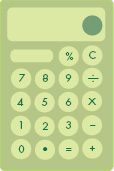
1.Arabic numbers are used to express quantities in the metric system.
2.Decimal fractions are used in the metric system. A zero should always be placed in front of the decimal when the quantity is less than 1 (e.g., 0.4 mg and not.4 mg). No decimal point or zero should follow a whole number.
3.The quantity is always written before the abbreviation or symbol (e.g., 60 mg, 0.55 mL; not mg 60 or mL 0.55).
Metric symbols are the same in singular and plural; e.g., 1 mg, 2 mg, or 100 mg. In selecting among unit dimensions (e.g., mg, g, kg), the choice is generally the unit that will result in a numeric value between 1 and 1000. For example, 500 g rather than 0.5 kg; 1.96 kg rather than 1,960 g; 750 mL rather than 0.75 L; or 750 mm or 75 cm rather than 0.75 meter.
Measure of Length
The meter is the fundamental unit of this system. It has been determined as approximately one ten-millionth part of the distance from the earth’s equator to the North Pole, and is in fact 39.37 inches, or a little more than 1 yard. The denominations used most commonly are the millimeter, centimeter, and meter. The common application of length in the practice of pharmacy involves patient height. Table 2.2 shows length equivalencies in the metric system.
meter Base unit of length in the metric system.
Measure of Volume
The liter is the fundamental metric unit of volume. The denominations used most commonly are the milliliter and liter. Table 2.3 shows volume equivalences in the metric system.
liter Base unit of volume in the metric system.
Measure of Weight
The fundamental unit of weight in the metric system is the gram. The denominations used most commonly in the practice of pharmacy are the microgram, milligram, gram, and kilogram. Table 2.4 shows weight equivalencies in the metric system.
gram Base unit of weight in the metric system.
For micrograms, the abbreviation mcg and the symbol μg are both used in this text. Although the symbol μg is used in the United States Pharmacopeia,1 the abbreviation mcg is widely used in pharmaceutical package labeling and in prescription writing. The term gamma (γ) is customarily used for microgram in biochemical literature.
Prescriptions written in the metric system use Arabic numerals before the abbreviations for the denominations (e.g., 6 g). Quantities of weight are usually written as grams and decimals of a gram, and volumes as milliliters and decimals of a milliliter.
Example:
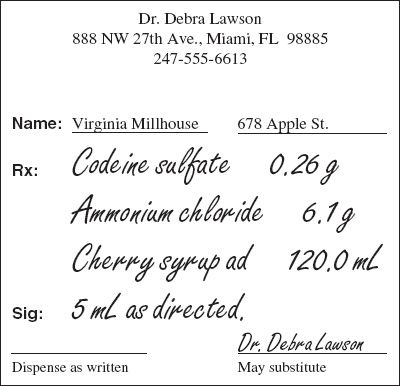
Critical Thinking 2.1

It is extremely important to recognize many normal doses, so that in the case of the missing zero and decimal point the error is noted. For example, a “normal” dose of Lanoxin® is 0.125 mg or 0.25 mg, not 125 or 25 mg. Remember, a misplaced decimal point will cause a minimum of a 10-fold error. With some medications this error can cause death.
Metric System Fundamental Computations
Reducing to Lower or Higher Denominations
The metric system is based on the decimal system; therefore, conversion within the metric system can be done by simply moving the decimal point. To change a metric denomination to the next smaller denomination, move the decimal point one place to the right. It takes fewer parts of the larger unit to make the same amount. To change a metric denomination to the next larger domination, move the decimal point one place to the left.
In pharmacy and health care in general, each unit of measure commonly used differs by 1000. Micrograms, milligrams, grams, and kilograms are metric units of weight, and milliliters and liters measure volume. Therefore, conversions within the metric system for these units can be made by moving the decimal point up to three places right to convert from larger to smaller units and three places left to convert smaller units to larger units (Fig. 2.1).
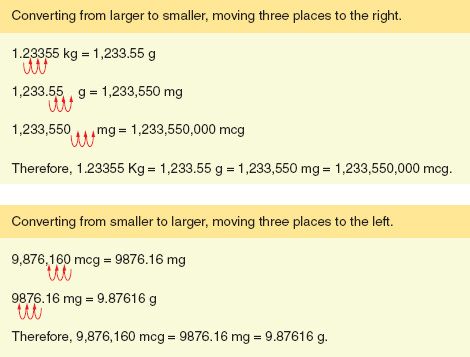
Figure 2.1 Conversions in the metric system.
Examples:
Reduce 1.23 kg to grams.
1.23 kg = 1230 g, answer
Reduce 9876 mg to grams.
9876 mg = 9.876 g, answer
In the first example, 1.23 kg is to be converted to grams. On the scale, the gram position is three decimal positions from the kilogram position. Therefore, the decimal point is moved three places toward the right. In the second example, the conversion from milligrams also requires the movement of the decimal point three places, but this time to the left.
Converting within the Metric System
The conversions discussed in the previous section can also be made by multiplying or dividing by 1000, by ratio-proportion, or by dimensional analysis.
Multiplication and Division by 1000
To convert from a large unit of measure to a smaller one, multiply. It takes more of a smaller unit to make the equivalent of the larger unit.
Example:
Convert 12 mcg to milligrams.
Multiply to get more units.
12 mcg × 1000 = 12,000 mg
Rule for Converting Units of Measure
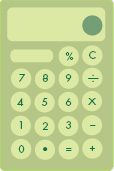
To convert from a smaller unit of measure to a larger one, divide.
Example:
Convert 12 mg to grams.
Divide to get fewer units.
12 mg ÷ 1000 = 0.012 g, answer
Example:
Convert 16.75 kg to grams
Conversion factor: 1 kg = 1000 g.
So
![]()
Solve for X:
16.75 kg=16,750 g, answer
The Dimensional Analysis Method
Example:

Addition and Subtraction
To add or subtract quantities in the metric system requires reducing them to a common denomination, preferably the base unit, and arranging their denominate numbers for addition or subtraction as ordinary decimals.
Examples:
Add 1 kg, 250 mg, and 7.5 g. Express the total in grams.
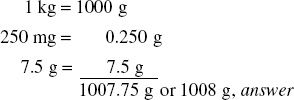
Add 4 L, 375 mL, and 0.75 L. Express the total in milliliters.

A capsule contains the following amounts of medicinal substances: 0.075 g, 20 mg, 0.0005 g, 4 mg, and 500 mcg. What is the total weight of the substances in the capsule?
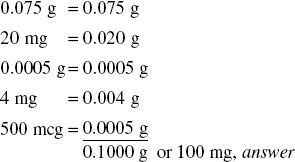
Subtract 2.5 mg from 4.850 g.

A prescription calls for 0.06 g of one ingredient, 2.5 mg of another, and enough of a third to make 0.5 g. How many milligrams of the third ingredient should be used? Interpret all quantities as accurate to the nearest 0.1 mg:

Multiplication and Division
Because every measurement in the metric system is expressed in a single given denomination, problems involving multiplication and division are solved by the methods used for any decimal numbers.
Examples:
Multiply 820 mL by 12.5 and express the result in liters.
820 mL × 12.5 = 10,250 mL = 10.25 L, answer
Divide 0.465 g by 15 and express the result in milligrams.
0.465 g ÷ 15 = 0.031 g = 31 mg, answer
1.Liters and milliliters are metric units that measure ______________________.
2.Kilograms, grams, and milligrams are metric units that measure ___________.
3.The base metric unit that measures volume is the __________________.
4.The base metric unit that measures weight is the ___________________.
8.Express the following amounts with proper notation:
b.Twenty-five hundredths of a milligram
c.Twelve and one-half milligrams
d.One hundred twelve micrograms
h.One hundred twelve and one-fourth micrograms
9.Make the following conversions:
10.Add 0.00250 kg, 1750 mg, 2.25 g, and 825,000 mcg and express the answer in grams.
11.Reduce 1.256 g to micrograms, to milligrams, and to kilograms.
12.Multiply 255 mg by 380, divide the result by 0.85, and convert the result to grams.
13.A low-strength chewable aspirin tablet contains 81 mg of aspirin per tablet. How many tablets may be prepared from 1 kg of aspirin?
| Phase 1 | 6 tablets, each containing 0.05 mg levonorgestrel and 0.03 mg ethinyl estradiol |
| Phase 2 | 5 tablets, each containing 0.075 mg levonorgestrel and 0.04 mg ethinyl estradiol |
| Phase 3 | 10 tablets, each containing 0.125 mg levonorgestrel and 0.03 mg ethinyl estradiol |
| Phase 4 | 7 inert tablets (no drug). |
| How many total milligrams each of levonorgestrel and ethinyl estradiol are taken during the 28-day period? | |
17. How many colchicine tablets, each containing 600 mcg, can be prepared from 30 g of colchicine?
